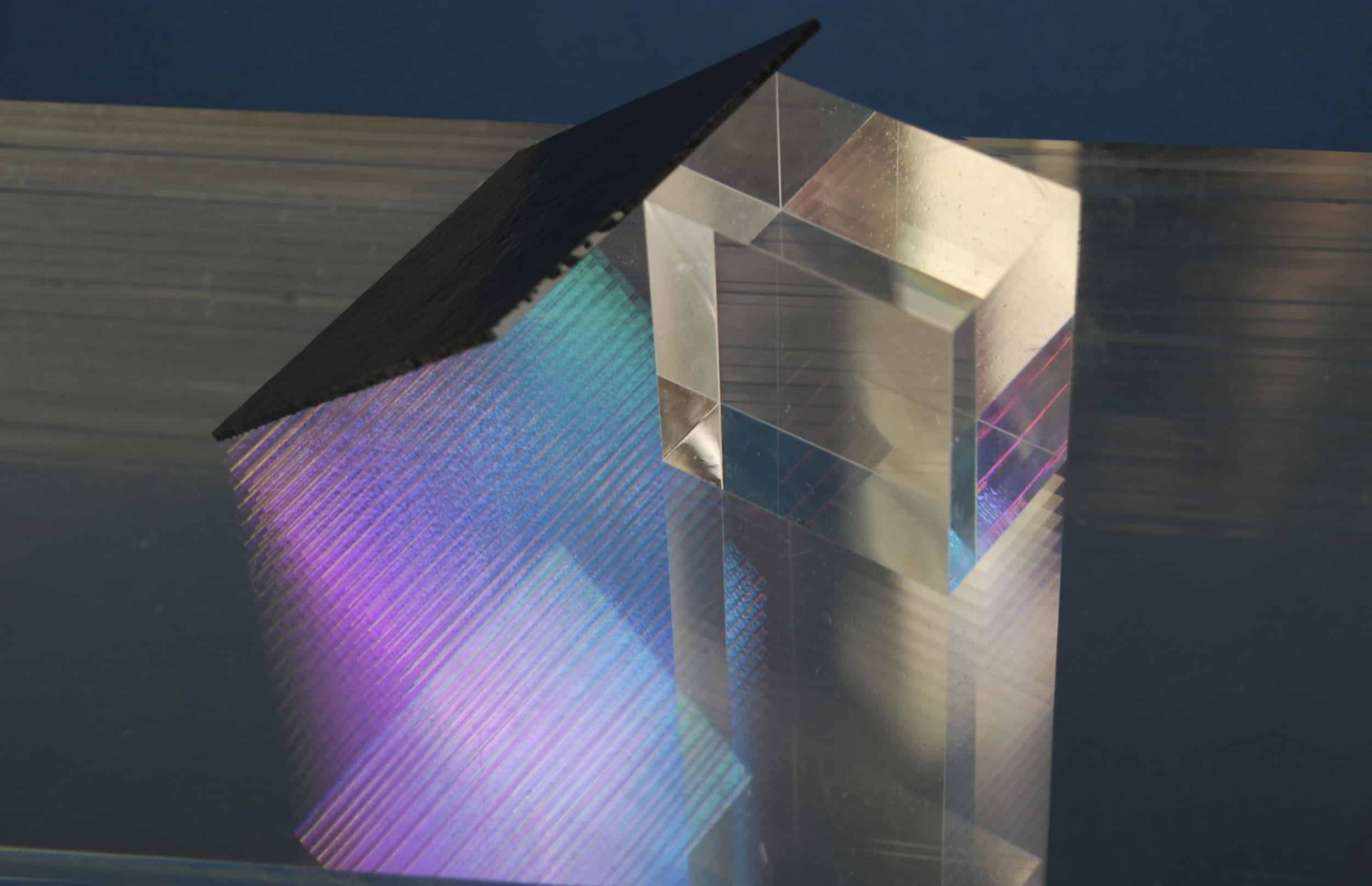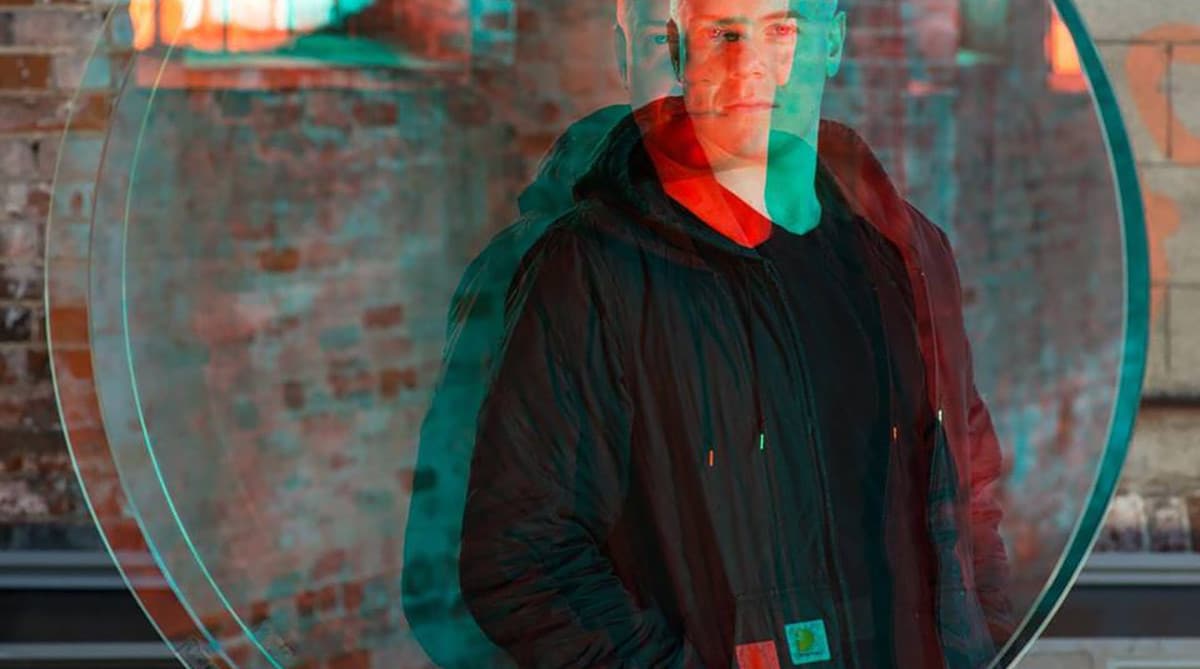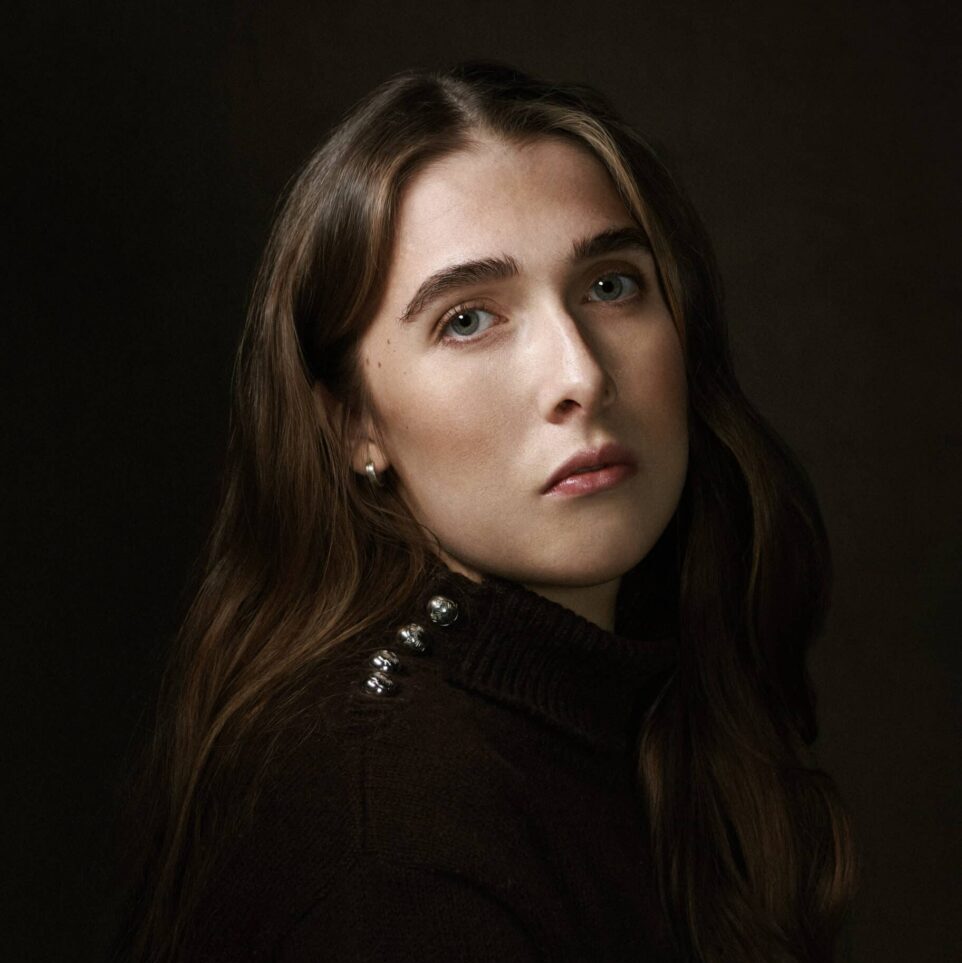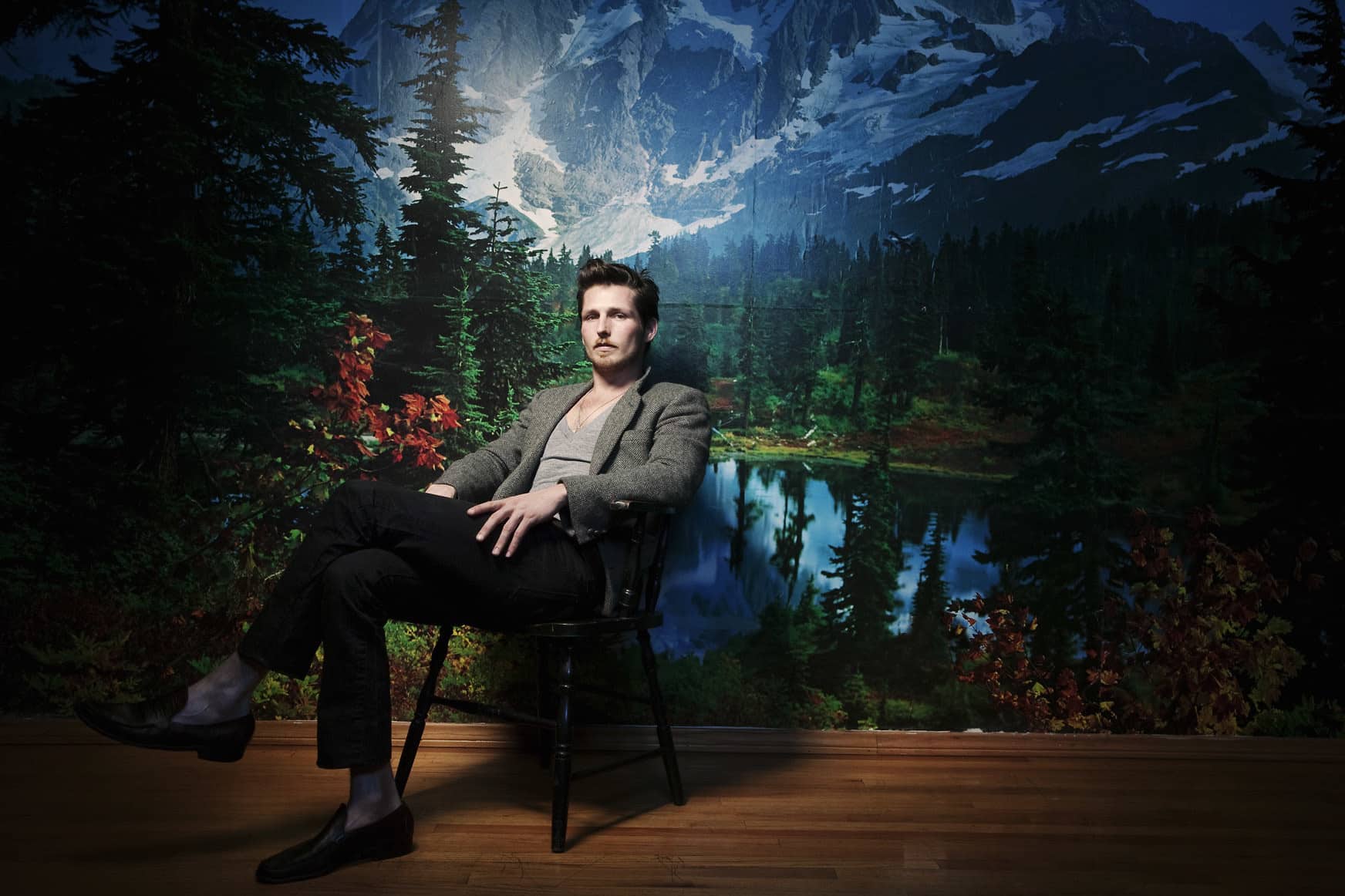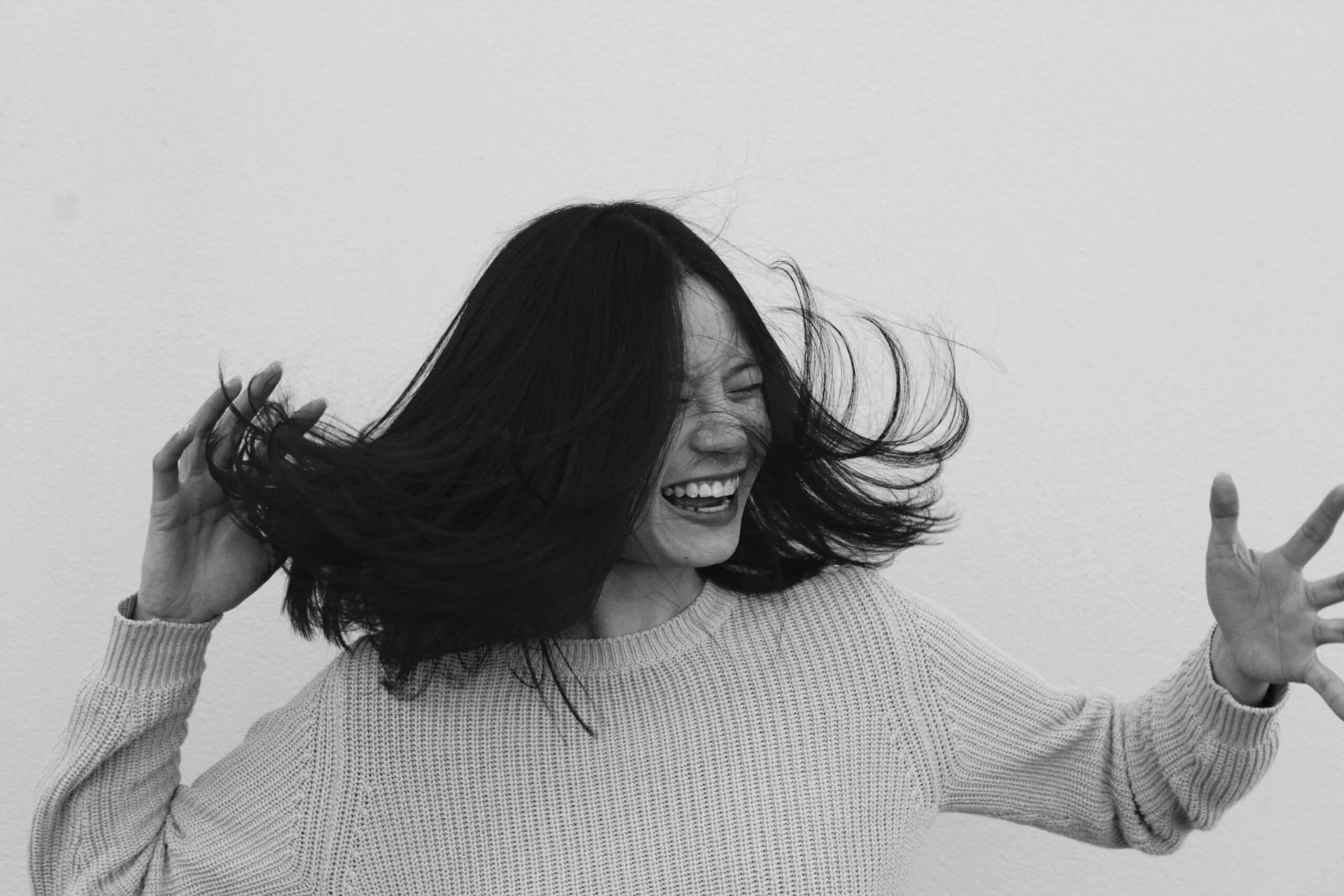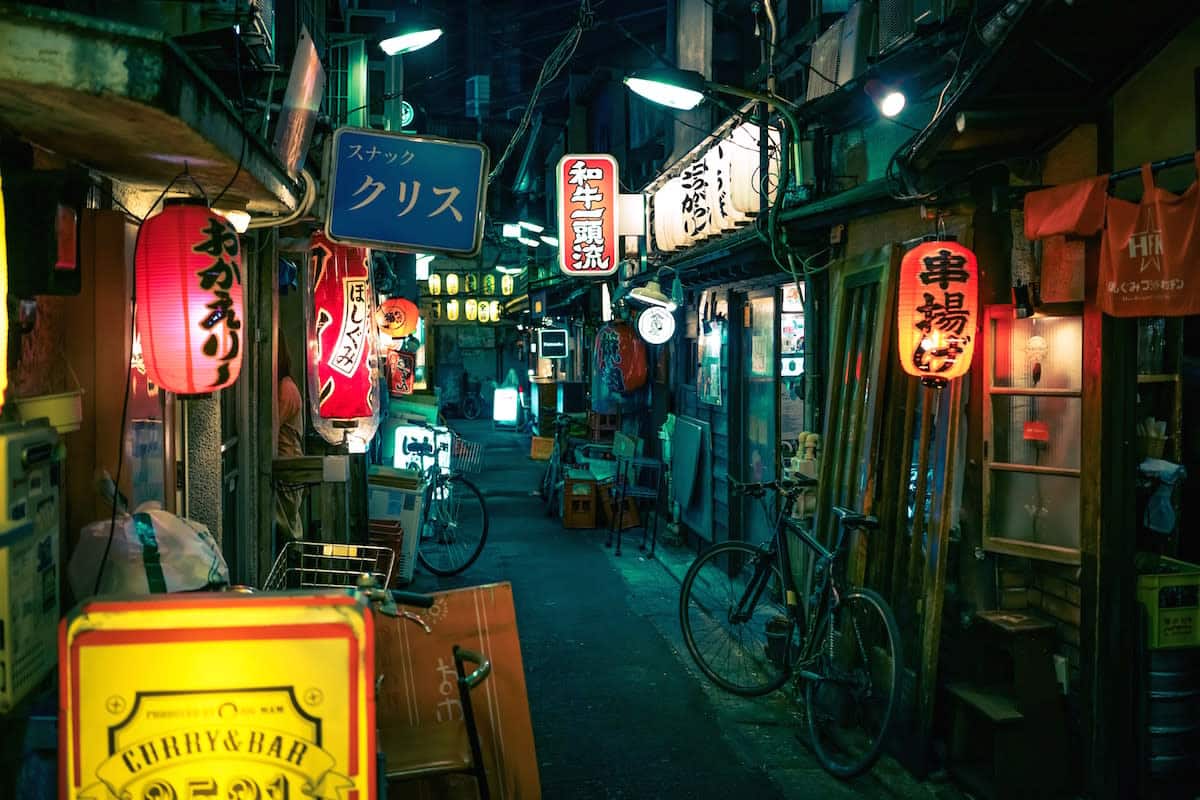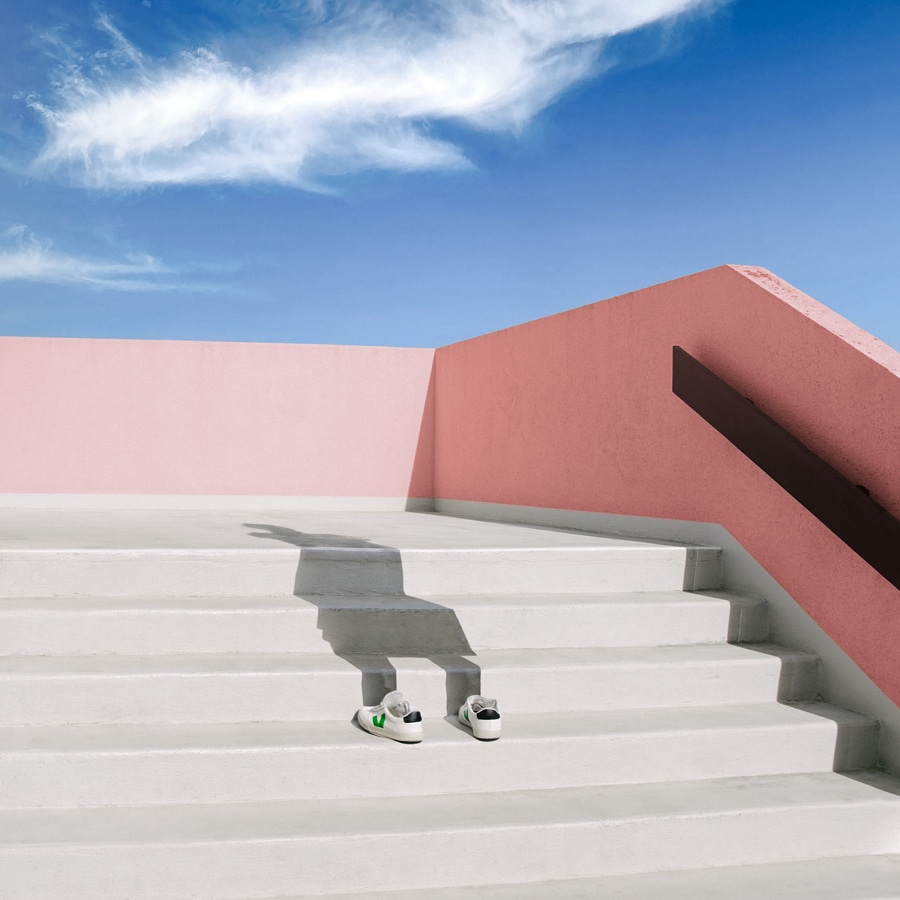From an apprenticeship on the cliffs of Chile to creating light installations for the world’s top art galleries.
Jordan Söderberg Mills is a mad scientist. His sculptural installations are experiments in light, physics, space and sound. Anaglyph (2016) is an optical glass mirror that plays with layered, stereographic imagery. Parabola I (2016) rests on the floor as a portal that distorts images of the world around you.
Each project requires years of research and prototyping. Mills’ work has a strong academic background that magically doesn’t require the same level of knowledge for viewers. You peer into the object and are amazed—it’s as simple as that.
The London and Toronto-based artist has been featured at the Victoria and Albert Museum, Tate Britain, London Design Festival and the Power Plant Gallery’s Power Ball. As the trend toward digital art continues, Mills’ art objects are an increasingly rare opportunity to interact with a physical work in a public setting.
We spoke to him about his apprenticeship on the cliffs of Chile, advice for fabricating art objects and why it’s ok to meet up with strangers on Craigslist.
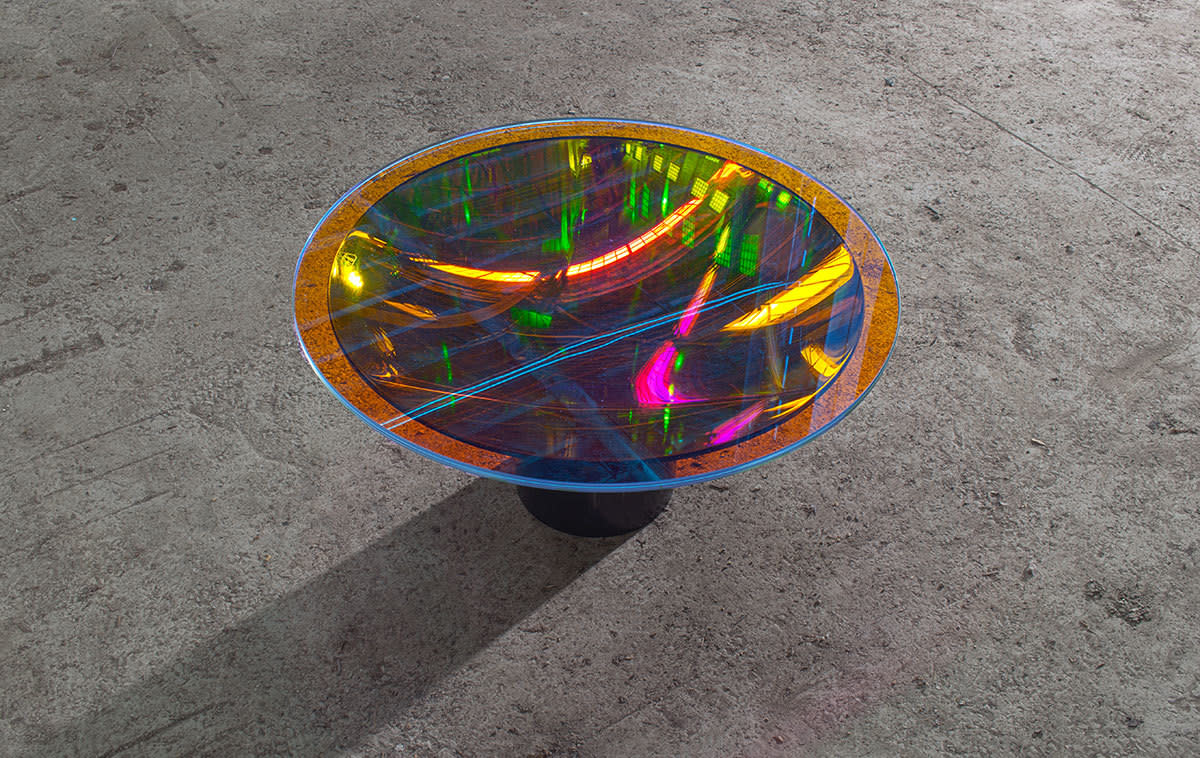
Hi Jordan! Can you tell me how you got started making these objects?
Jordan Söderberg Mills: I did my undergraduate degree in art history, and realized five years into a four-year degree that I couldn’t stand it. I needed to do something different. I was whining and complaining about not building my own ideas and Francisco Gazitua, a Chilean artist, offered me an apprenticeship. He said, ‘I can teach you how to weld,’ so I thought, ‘Hell yeah, why not?’
How did that go?
I lived in a shed on his property. It was beautiful. He lives on a cliff in Chile. I was getting up at 5 a.m. and sharpening his tools and setting up his forge. It was a renaissance idea of a mentor and an apprentice.
Mentorship seems to be lost these days. Everyone teaches themselves from a YouTube video
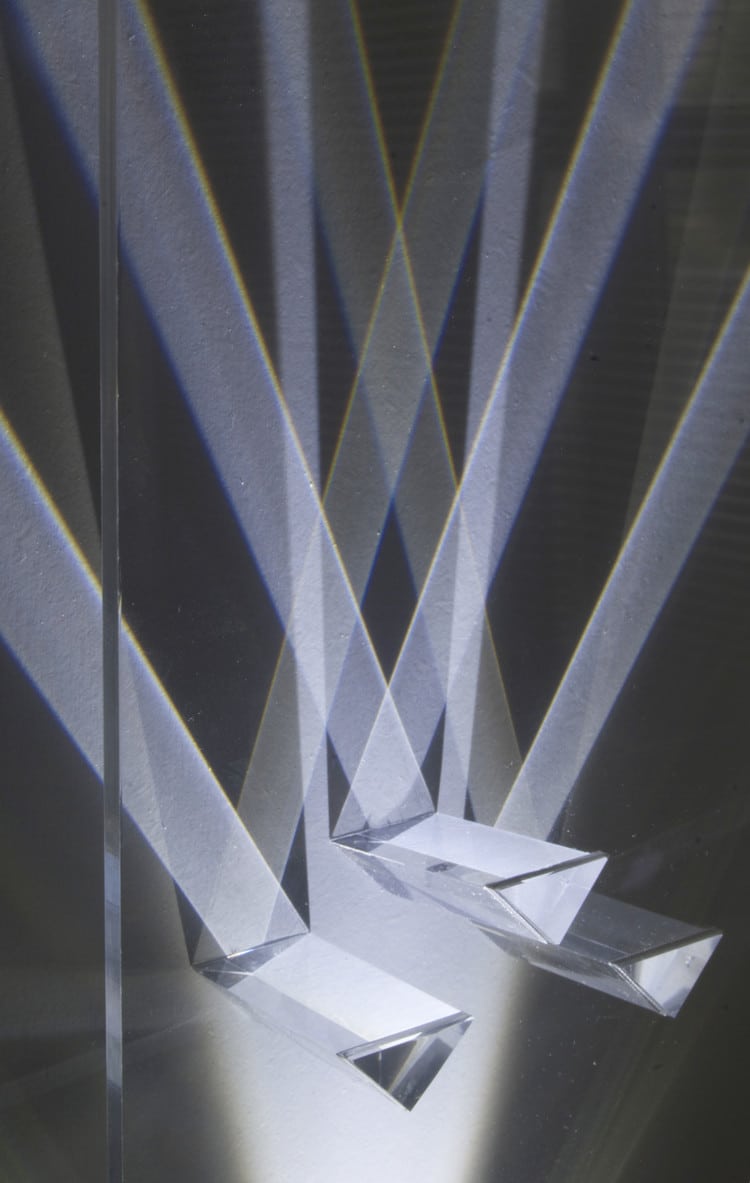
Well, it probably would have been easier to watch a YouTube video because it was pretty gruelling. It was the best cardio in the world. While I was apprenticing with Francisco, I was also studying architecture at the local university. The more and more I worked with Francisco, I realized that this was my calling—making things.
There was no IKEA in Santiago, so I ended up making all of my furniture in my apartment out of steel. That led to a short course in design methodologies. Half of the course was in Barcelona and half was at Central Saint Martins in London. After that, I did a Masters degree at Central Saint Martins.
When did you get obsessed with light and color?
I’m really interested in the idea of the interstitial—things that lie between states. Monsters, magic, the uncanny. All of the moments when your expectations are subverted and you think, ‘What the hell is that?’
My Masters work was experiments in how physics interacts with perception. They’re design objects, but they’re really experiments in physics. I feel a bit like a mad scientist.
I’ve always wanted to be a wizard. When I was a kid, my brother would be playing with guns and I’d be like, ‘I control the elements!’ and he’s be like, ‘Go control that tree over there.’
What was your initial research process like?
When I first got into Central Saint Martins, I was looking at kaleidoscopes and recreating what I saw. It was a turning point in my practice. The professors there said, ‘Okay, this is a really good idea, but you’re looking at shadow and replicating it. Why don’t you work with the actual shadow?’
So I took a giant Maglite flashlight, like the ones police officers use, into the Victoria and Albert Museum and shone it through objects in the glass collection. I wanted to see what kind of patterns would emerge.
I bought a prism in the gift shop and it did cool things in relation to the flashlight. If I turned it a certain way, it would make a rainbow. So I started accumulating more and more prisms to find ways that I could build patterns purely out of light. That led to research about iridescent materials including butterfly wings.
I was thining, ‘How can I create color, not by painting something, but by producing color on a physical level?’
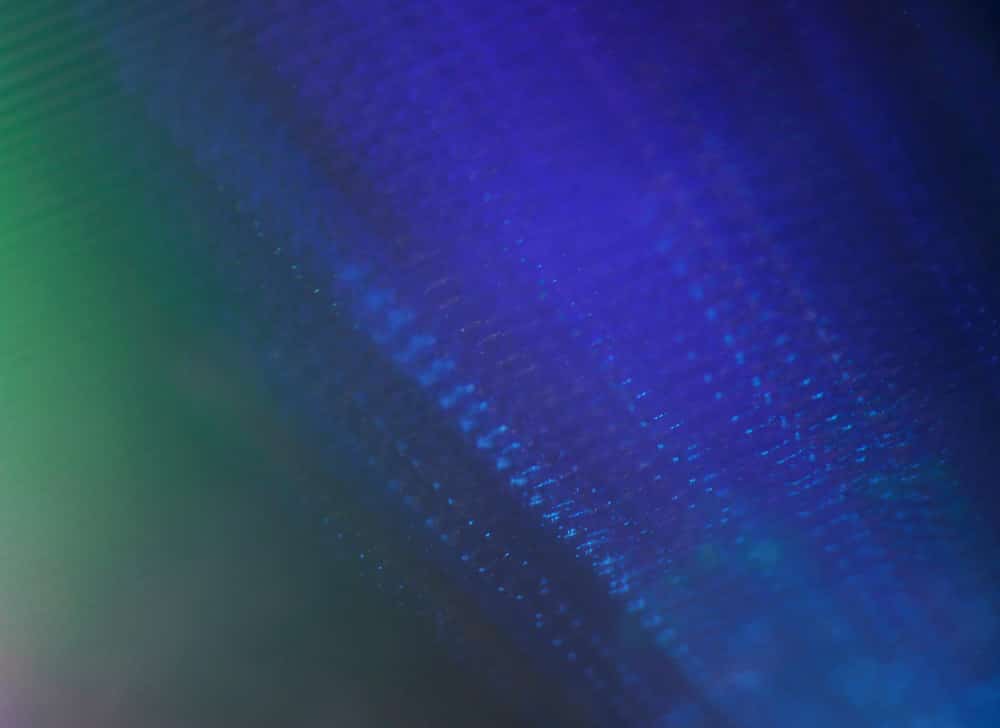
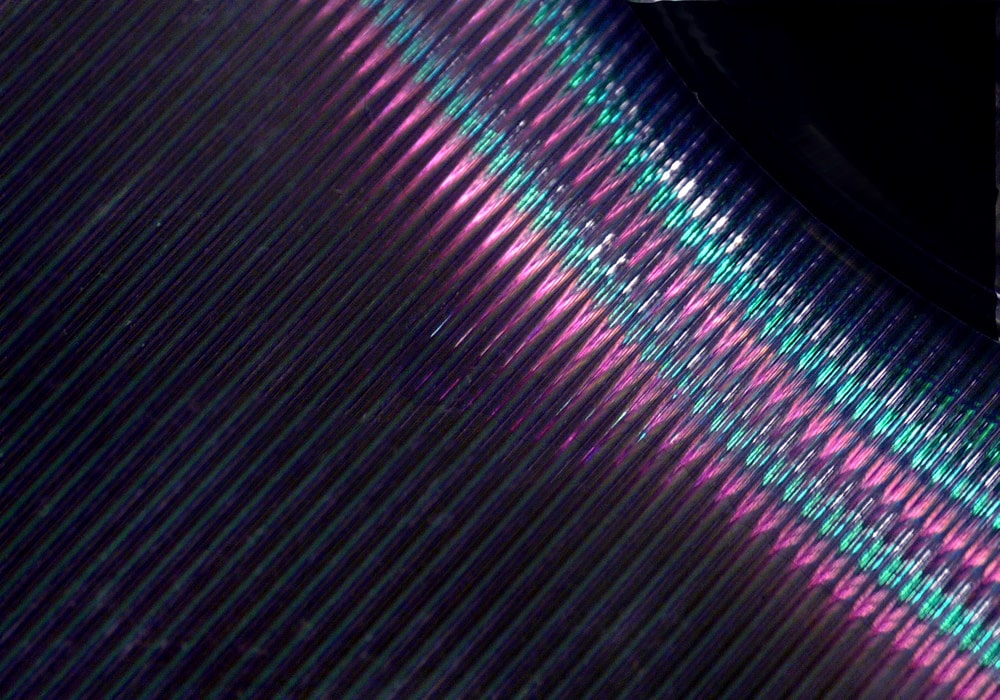
How does the conceptual research translate into creating your objects?
The first part is iterating with materials. Because I’m interested in light and the materiality of light, I’ve been looking at different ways in which scientists use light for analysis—polarizing lenses, optical filters, magnifying glasses, prism, lasers.
I experimented with those things in relation to one another. I would cast a light on them and see how these objects intervene with light and how to manipulate them. When I catch on to something like, ‘Oh, this metal oxide does something really interesting,’ I contact the laboratory and ask them if they’re interested in trying out something new…
It’s so much easier for young, emerging artists to create digital work. What’s your advice for artists who want to work with more materials, but don’t feel like they have access to the tools or resources?
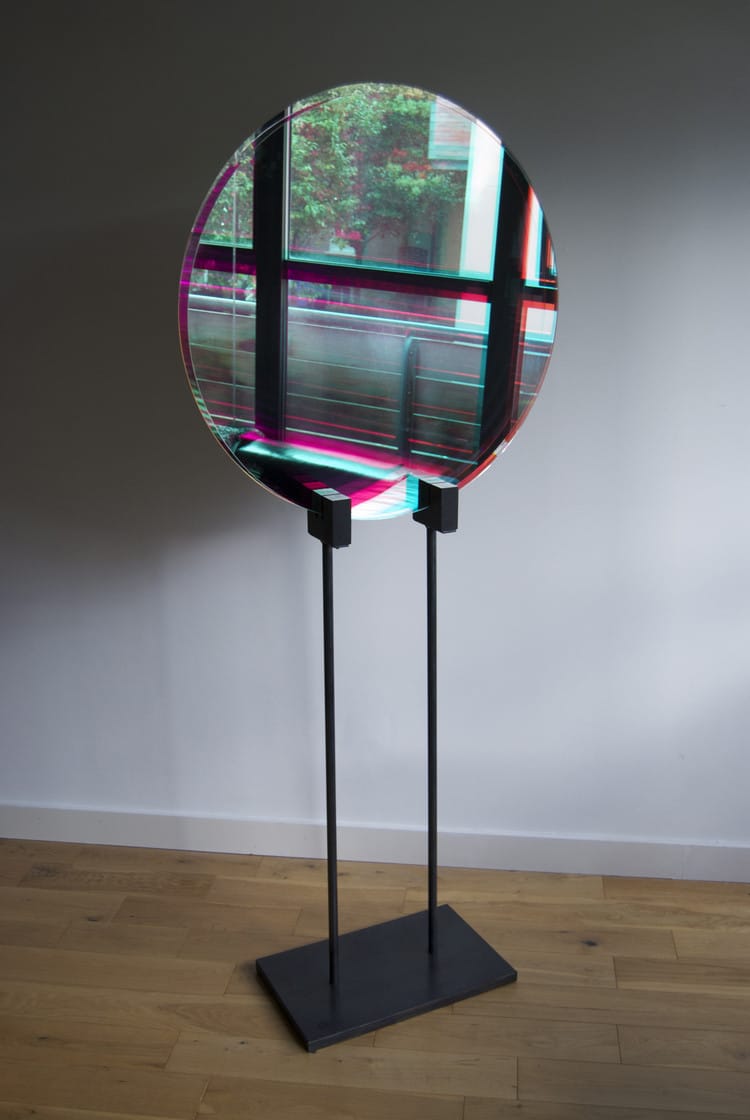
For an artist that really wants to work with materials, budgets are obviously a big deal. Finding a way to support paying for materials is a challenge in itself. That’s almost 50% of the time: finding resources to be able to do experimentation.
A lot of artists will immediately turn to the digital and the ephemeral it’s a lot cheaper. You can be in a coffee shop with a laptop and some pirated software and create amazing things.
If they’re interested in making objects, they need to pick up power tools. My apprenticeship was a good introduction to that. It was difficult because I had to travel, but it was cheaper to live there so I didn’t have to hustle as much. I could put my money into my art practice.
You can get similar experience by going to communal workshops in the city. Take an evening course in woodworking, stone carving, leather tooling. The hardware store Lee Valley has weekend courses in basic joinery and woodworking.
Have you ever taken a class like that?
I took an enamel course with a women from Craigslist. Usually showing up at someone’s house from Craigslist is not a good idea, but it was amazing. It’s a skilll that may not be part of my practice right now, but I like the idea of understanding surface quality on metals. It’s about building your toolbox in as may diverse fields as possible because you never know when it’s going to come in handy.
Jordan Söderberg Millsportfólio da
